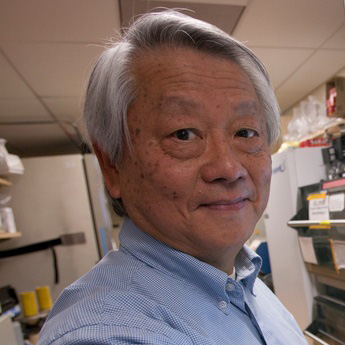
Yuh Nung Jan, PhD
We have been working on various aspects of developmental neurobiology, from neurogenesis, asymmetric cell division and more recently to neuronal morphogenesis and repairmen by using Drosophila. Initially, we focused on how neuronal cell fates are specified. In 1993, we discovered Atonal, which turns out to be the founding member of an important family of proneural genes including Neurogenin, Math 1 and Math 5. We also discovered the role of the homeodomain protein Cut in specifying subtypes of neurons. These studies provided insights to neuronal cell fate specification.
We next addressed the question of how do two daughters of a neural progenitor acquire different cell fates. We approached this problem by studying Drosophila sensory bristle, which is derived from a single precursor that goes through 4 divisions giving rise to 5 cells. Each division is asymmetric. We identified numb mutant, in which all the divisions become symmetrical. In 1994, we discovered that Numb is asymmetrically localized to one pole of the precursor cell and segregated into one of the daughter cells to make them different. This process is repeated in all the divisions of the sensory bristle linage as well as in the neuroblast divisions. Numb is the first cell fate determinant identified for asymmetric cell division in the nervous system. Subsequent studies by us and the others, concerning how Numb and other cell fate determinants are localized to one of the two daughter cells to specify their fates, have provided insights about the mechanisms of asymmetric cell division, a basic mechanism for generating cell diversity.
In the past 16 years, dendrite morphogenesis has become the main focus of our lab. Dendrites are part of neuron used to receive signal. They are among the most beautiful structures in biology. Each type of neuron has distinct dendritic morphology. So dendrite morphology is a distinguishing hallmark of a neuron. Not much was known about the underlying mechanisms when we started studying this problem in 1999. We found that the dendritic arborization (da) neurons of the Drosophila larval PNS are very well suited for studying dendrite morphogenesis. Those neurons could be divided into 4 different classes based on their dendritic morphology. By using them, my colleagues and I have gained some insights about dendrite development. For example: how neurons with distinctive dendrite morphologies depend on their level of Cut expression for diverse dendrite branching complexities, how certain types of neurons exhibit homotypic repulsion of their dendrites to allow tiling of the dendritic field for maximal coverage without ambiguity, by revealing the essential role of the NDR family kinase Tricornered, how tiling and dendrite maintenance can be differentially regulated by the upstream NDR family kinase and tumor suppressor Hippo, and how a differential reliance on the secretory pathway contributes to the differentiation of axons and dendrites. More recently, by taking advantage of the wealth of information gained from our study of normal dendrite morphogenesis, we have begun to study the molecular mechanisms controlling the regeneration of axons and dendrites after injury.
